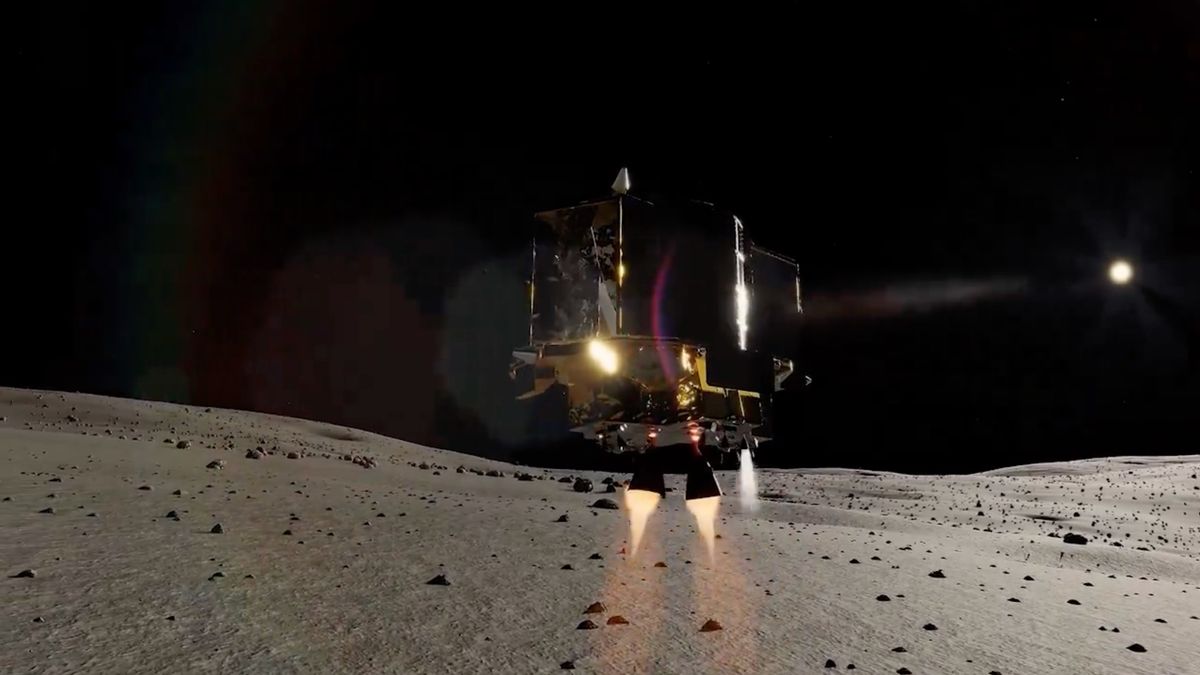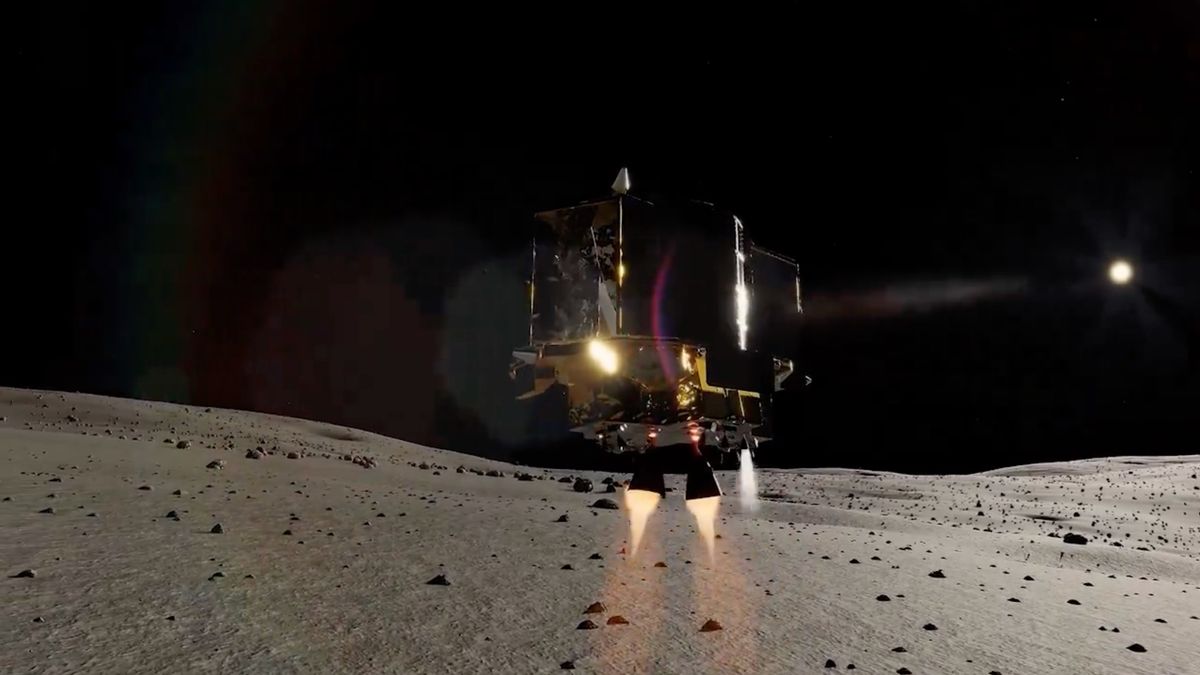
A Japanese lander touched down on the moon this morning (Jan. 19), but it wasn’t immediately clear if the probe survived the historic maneuver.
The robotic SLIM spacecraft hit the gray dirt on schedule today at 10:20 a.m. EST, but that’s about all we know at this point.
“From the telemetry, what we see is the SLIM has landed,” a spokesperson with the Japan Aerospace Exploration Agency (JAXA) said during live commentary of the landing this morning. “We are now checking the status.” The agency will hold a press conference today at an unspecified time to give an update on the lander’s health, commentators said during the landing.
Success would make Japan the fifth country in the moon-landing club. The others are the Soviet Union and the United States, which made their first trips to the lunar surface during the Cold War space race; China, whose initial landing occurred in December 2013; and India, whose Chandrayaan-3 lander-rover duo touched down last August.
Related: Missions to the moon: Past, present and future
SLIM (short for “Smart Lander for Investigating Moon”) launched last September, along with an X-ray space telescope called XRISM. The scope deployed into low Earth orbit shortly after liftoff (and recently sent home its first test images), but SLIM set out for more distant celestial shores.
The probe took a long and looping route toward the moon, finally arriving in lunar orbit on Christmas Day. Its initial orbit was highly elliptical, taking SLIM within 373 miles (600 kilometers) of the lunar surface at its closest point and 2,485 miles (4,000 km) away at its most distant.
Early on Sunday morning (Jan. 14), SLIM performed a crucial engine burn, circularizing its orbit at the 373-mile altitude and setting the stage for descent-and-landing operations.
Those operations ramped up with another burn this morning, which took SLIM’s orbit down to about 9 miles (15 km) above the lunar surface. And they culminated in the landing try, which began today at about 10 a.m. EST (1500 GMT; midnight on Jan. 20 Japan time) and wrapped up 20 minutes later.
Everything appeared to go smoothly — SLIM hit its various milestones during the descent — but JAXA couldn’t immediately confirm the lander’s status. So we’ll have to wait for an update.
SLIM aimed to land within 330 feet (100 meters) of its target site on the rim of Shioli Crater, explaining the probe’s “Moon Sniper” nickname.
“While impressive in their own right, this mission’s landing ambitions are also key to the future of scientific lunar exploration,” The Planetary Society wrote in a mission description.
“Global interest in the moon is growing, with many nations and commercial entities entering the field,” added the nonprofit advocacy group, which is led by former TV “Science Guy” Bill Nye. “As lunar exploration advances, so will the need to target specific sites to address salient science questions. SLIM’s mission architecture hopes to shift the standards of lunar landing missions, from touching down where it’s easy to setting down exactly where desired.”
SLIM also aimed to show that small, relatively inexpensive spacecraft are capable of impressive exploration feats. The probe weighs just 440 pounds (200 kilograms) without propellant, and its mission cost about 18 billion yen ($120 million US) to develop, according to The Planetary Society.
RELATED STORIES:
Though SLIM is primarily a landing-tech demonstrator, it was designed to perform some science work during its surface mission, which will last one lunar day, or about two Earth weeks. (SLIM doesn’t have heaters to protect its electronics against the frigid lunar night.)
If the probe survived its landing try, SLIM will study its surroundings — a patch of Mare Nectaris (“Sea of Nectar”), which lies about 15 degrees south of the lunar equator — using its onboard spectrometer. The instrument’s data will reveal insights about the area’s composition, which in turn could shed light on the moon’s formation and evolution.
If all goes according to plan, SLIM will also deploy two tiny rovers, called LEV-1 and LEV-2. (“LEV” is short for “Lunar Excursion Vehicle.”) LEV-1 is designed to hop across the lunar surface, and the ball-shaped LEV-2 will separate into two halves and crawl around the landing site. These two little robots will gather data of their own and snap photos, including pictures of the SLIM mothership.
SLIM isn’t the first Japanese spacecraft to aim for a lunar touchdown. The nation put a tiny lander called OMOTENASHI on NASA’s Artemis 1 mission, which sent an uncrewed Orion capsule to lunar orbit and back in late 2022. But OMOTENASHI’s handlers couldn’t establish communications with the probe, and its landing attempt was abandoned.
The private Hakuto-R lander took a swing in April 2023 but was unsuccessful. Hakuto-R, which was built and operated by the Tokyo company ispace, made it to lunar orbit but crashed during its touchdown try after getting confused by the rim of a lunar crater.



